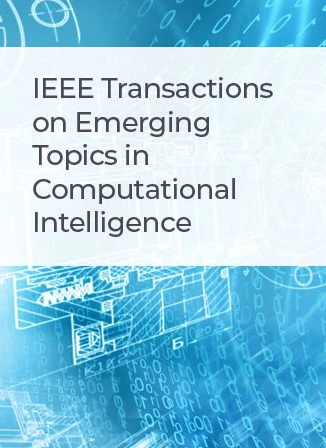脑连接组学中的事件因果关系提取:一个利用加权联合约束学习的模型
IF 5.3
3区 计算机科学
Q1 COMPUTER SCIENCE, ARTIFICIAL INTELLIGENCE
IEEE Transactions on Emerging Topics in Computational Intelligence
Pub Date : 2024-10-09
DOI:10.1109/TETCI.2024.3462173
引用次数: 0
摘要
脑科学研究已经进入了连接组学时代,其特点是研究大脑结构和功能连接的文章显著增加。从这些文章中自动准确地提取科学证据已成为一个迫切需要关注的问题。与早期在功能区水平上的脑机制研究不同,脑连接组学研究具有更复杂的实验设计和更复杂的结果。传统的神经成像文本挖掘技术,在术语水平上操作,不足以有效地从脑连接组学文章中提取科学证据。本文解决了事件级神经成像文本挖掘中的一个关键挑战,即脑连接组学中的事件因果关系提取。利用加权联合约束学习,提出了一种新的脑连接组学事件关系挖掘(BCERM)模型。通过整合双向长短期记忆(BiLSTM)网络和多层感知器(MLP),我们开发了一个轻量级模型,用于从脑连接组学文章中联合提取多个事件因果关系。考虑到标注脑连接组语料库的稀缺性,我们提出了一个加权联合约束学习框架。该框架集成了双重一致性约束,包括常识约束和领域约束,并将它们与自适应权重学习相结合,增强了模型的少镜头学习能力。在真实脑连接组学文章数据集上的实验评估表明,我们的方法达到了70%的f分,在低资源环境下优于最先进的事件关系提取方法。本文章由计算机程序翻译,如有差异,请以英文原文为准。
Event Causal Relation Extraction in Brain Connectomics: A Model Utilizing Weighted Joint Constrained Learning
Brain science research has entered the era of connectomics, characterized by a significant increase in published articles investigating brain structure and functional connections. Automatically and accurately extracting scientific evidence from these articles has become an urgent concern. Unlike early brain mechanism studies at the functional area level, brain connectomics studies feature more intricate experimental designs and yield complex findings. Traditional neuroimaging text mining techniques, operating at the term level, are insufficient for effectively extracting scientific evidence from brain connectomics articles. This paper addresses a key challenge in event-level neuroimaging text mining, i.e., event causal relation extraction in brain connectomics. We introduce a novel model named Brain Connectomics Event Relation Miner (BCERM), leveraging weighted joint constrained learning. By integrating a bidirectional long short-term memory (BiLSTM) network with a multi-layer perceptron (MLP), we develop a lightweight model for jointly extracting multiple event causal relations from brain connectomics articles. Given the scarcity of annotated brain connectomics corpora, we propose a weighted joint constrained learning framework. This framework integrates double consistency constraints, encompassing common sense and domain constraints, and combines them with adaptive weight learning to enhance the model's few-shot learning capability. Experimental evaluations on a real brain connectomics article dataset demonstrate that our method achieves an F-score of 70%, outperforming state-of-the-art event relation extraction methods in the low-resource environment.
求助全文
通过发布文献求助,成功后即可免费获取论文全文。
去求助
来源期刊

IEEE Transactions on Emerging Topics in Computational Intelligence
Mathematics-Control and Optimization
CiteScore
10.30
自引率
7.50%
发文量
147
期刊介绍:
The IEEE Transactions on Emerging Topics in Computational Intelligence (TETCI) publishes original articles on emerging aspects of computational intelligence, including theory, applications, and surveys.
TETCI is an electronics only publication. TETCI publishes six issues per year.
Authors are encouraged to submit manuscripts in any emerging topic in computational intelligence, especially nature-inspired computing topics not covered by other IEEE Computational Intelligence Society journals. A few such illustrative examples are glial cell networks, computational neuroscience, Brain Computer Interface, ambient intelligence, non-fuzzy computing with words, artificial life, cultural learning, artificial endocrine networks, social reasoning, artificial hormone networks, computational intelligence for the IoT and Smart-X technologies.
 求助内容:
求助内容: 应助结果提醒方式:
应助结果提醒方式:


